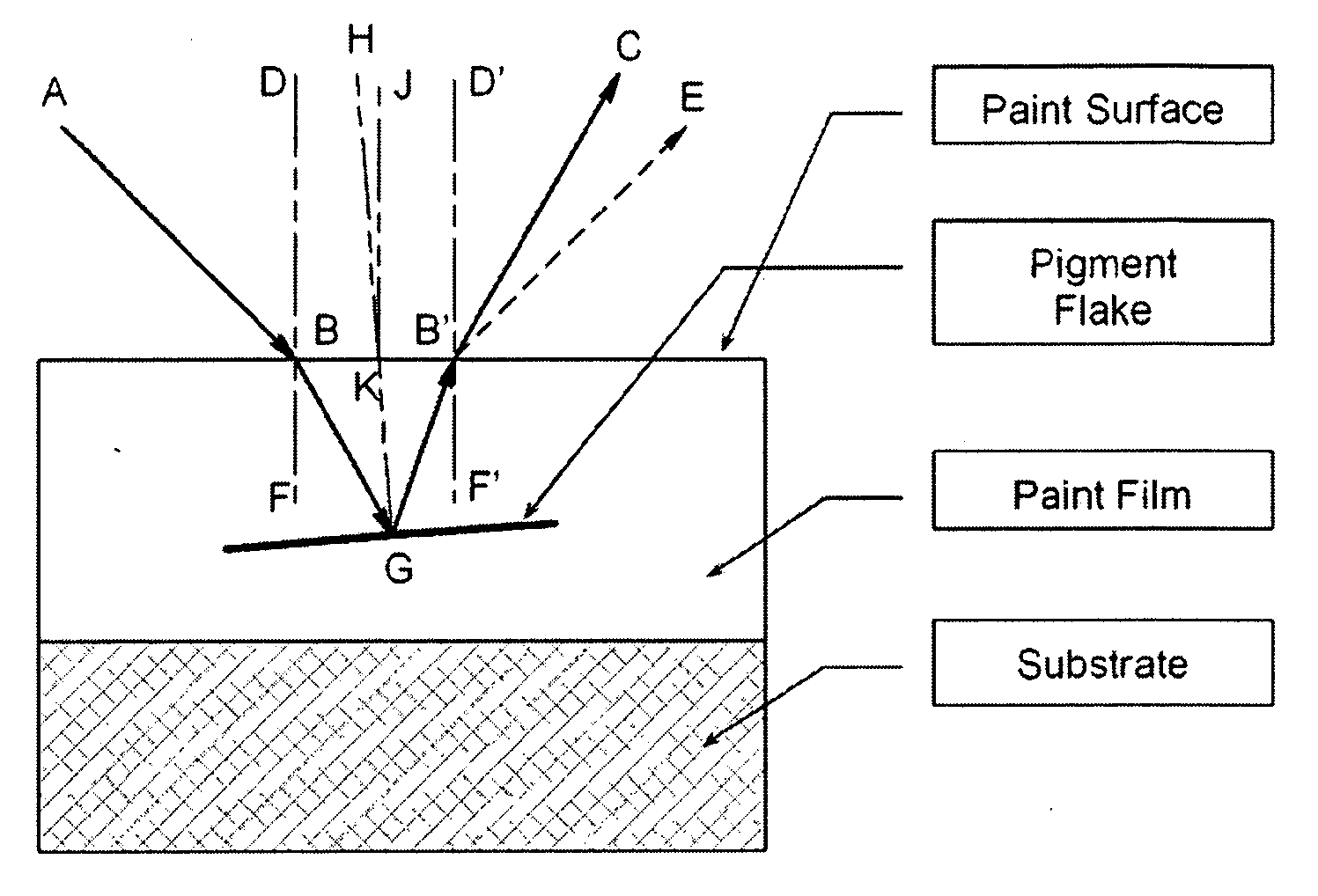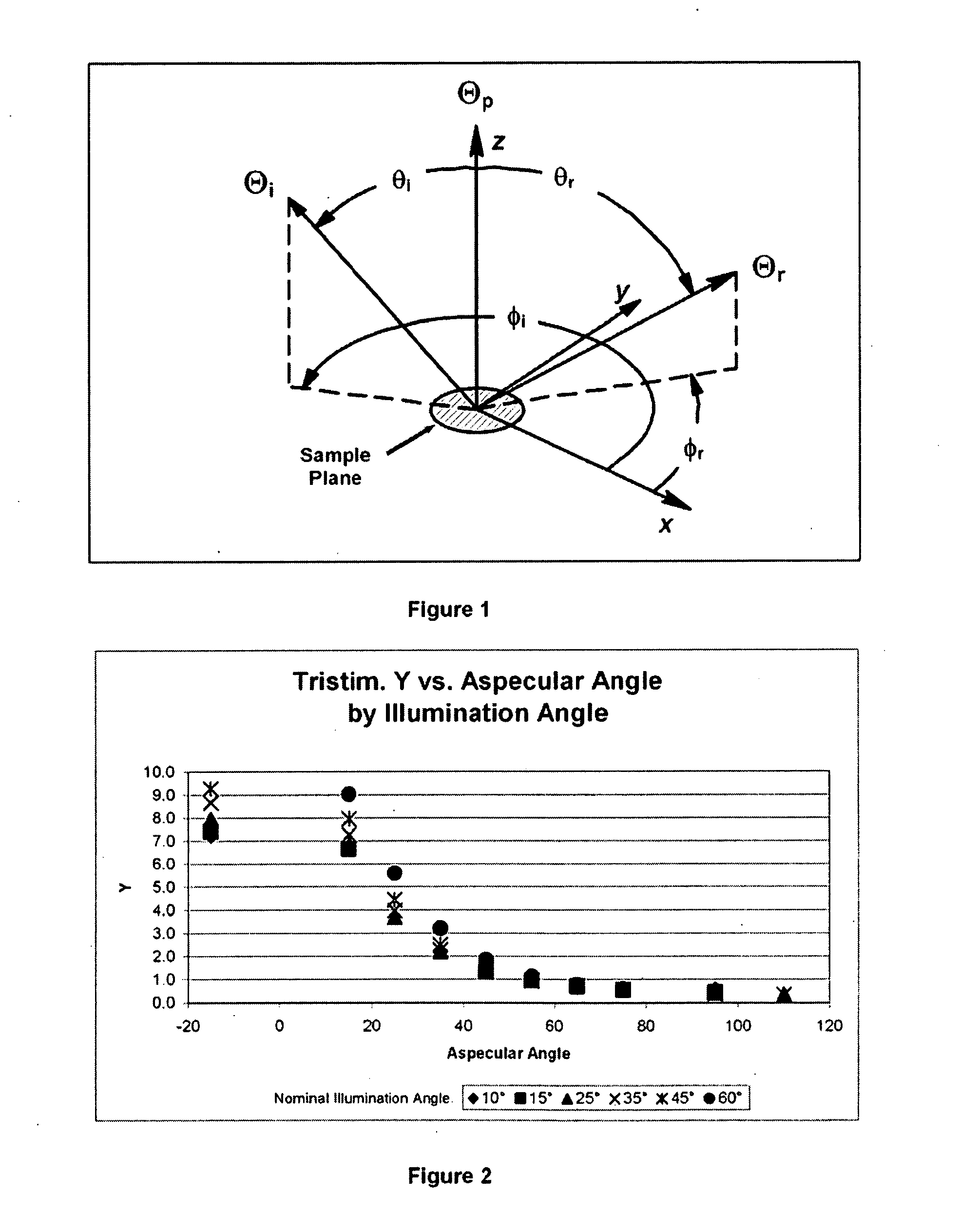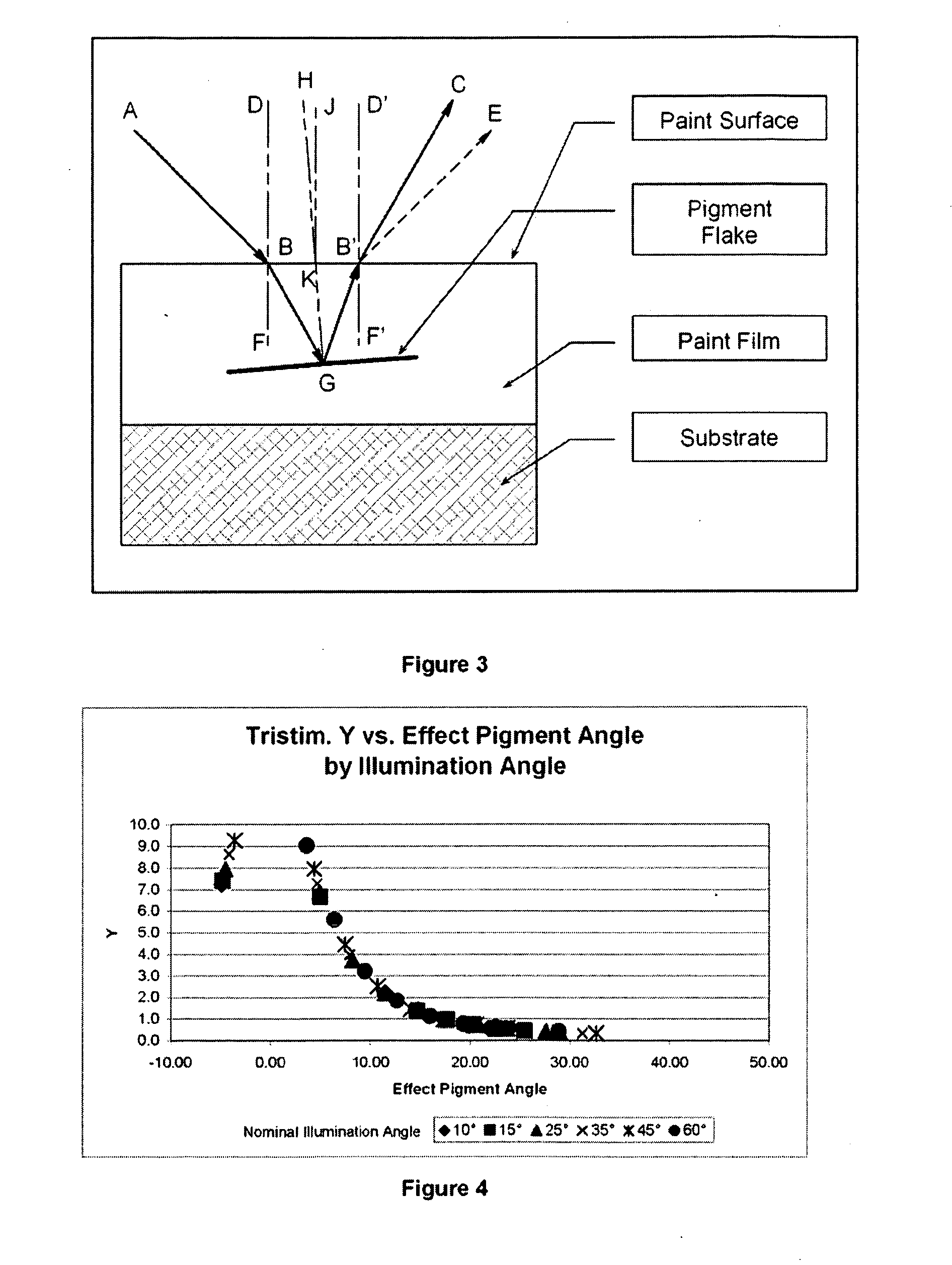Process for generating bidirectional reflectance distribution functions of gonioapparent materials with limited measurement data
a technology of gonioapparent materials and measurement data, applied in the direction of optical radiation measurement, instruments, spectrometry/spectrophotometry/monochromators, etc., can solve the problems of inability to achieve sufficient fidelity, inability to develop and tune the model to match the behavior of a physical standard, and high cost of instruments with the required geometric flexibility and photometric accuracy
- Summary
- Abstract
- Description
- Claims
- Application Information
AI Technical Summary
Benefits of technology
Problems solved by technology
Method used
Image
Examples
example 1
[0079]The following example demonstrates and illustrates the steps required to generate an L* colorimetric BRDF for an automotive paint sample containing metal flake effect flake pigments. The L* colorimetric axis is used as an example only, and the same basic steps are required for calculation of other colorimetric BRDF axes or directional reflectance factor.
[0080]In step (A) of the process, the sample specimen is placed in a Model GCMS Goniospectrophotometric Measurement System which has been calibrated according to the manufacture's established procedure. L*a*b* measurements of the specimen are made at the following set of illumination and viewing geometries:
θi1=45 degrees, φi1=0 degrees, θs1=30 degrees, φs1=180 degrees 1)
θi2=45 degrees, φi2=0 degrees, θs2=0 degrees, φs2=0 degrees 2)
θi3=45 degrees, φi3=0 degrees, θs3=75 degrees, φs3=0 degrees 3)
[0081]These geometries represent measurements at aspecular angles of 15 degrees, 45 degrees, and 110 degrees respectively. The L*a*b* ...
PUM
 Login to View More
Login to View More Abstract
Description
Claims
Application Information
 Login to View More
Login to View More - R&D
- Intellectual Property
- Life Sciences
- Materials
- Tech Scout
- Unparalleled Data Quality
- Higher Quality Content
- 60% Fewer Hallucinations
Browse by: Latest US Patents, China's latest patents, Technical Efficacy Thesaurus, Application Domain, Technology Topic, Popular Technical Reports.
© 2025 PatSnap. All rights reserved.Legal|Privacy policy|Modern Slavery Act Transparency Statement|Sitemap|About US| Contact US: help@patsnap.com



